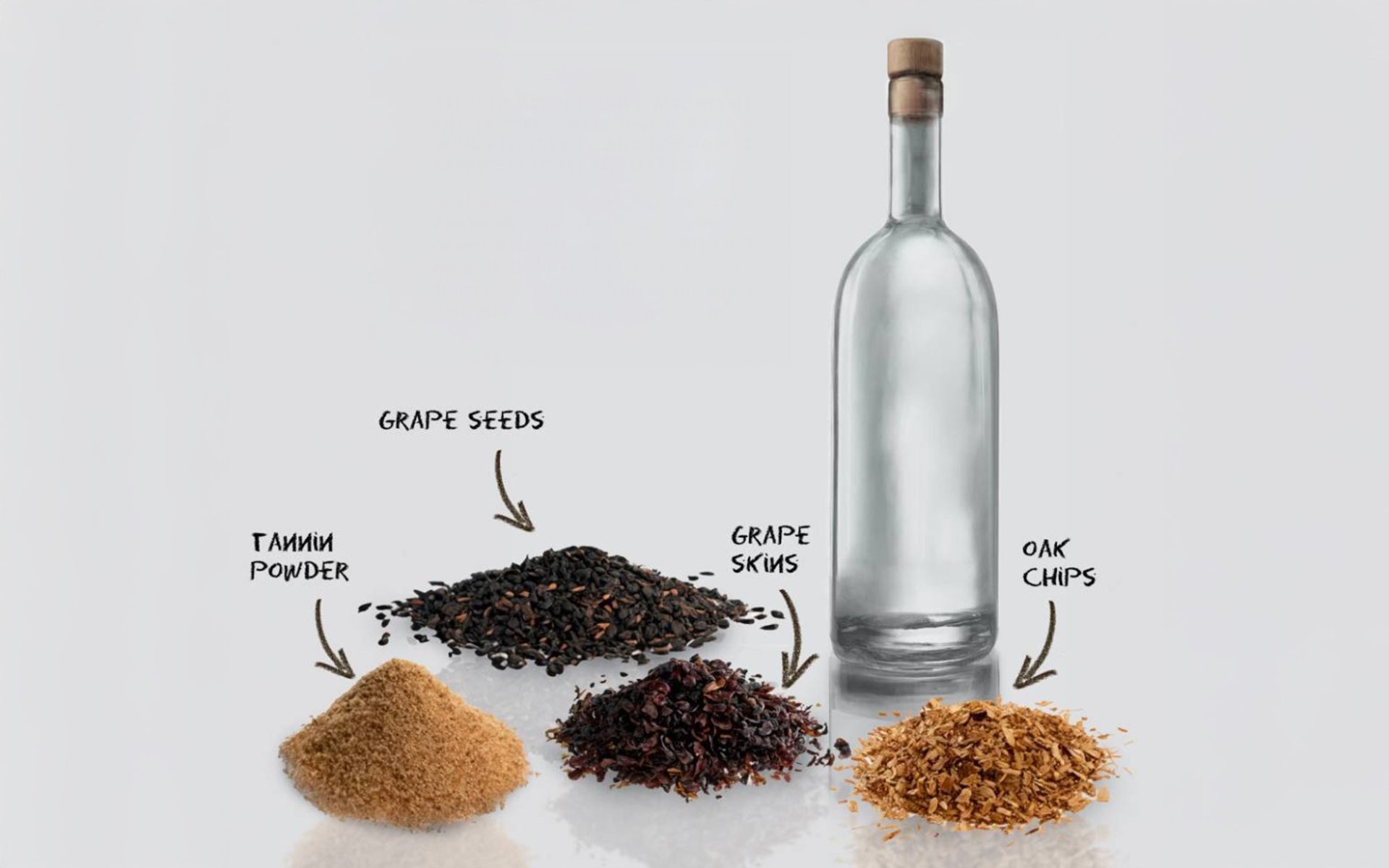Tannins

Tannins are a term frequently discussed in the world of wine, and many wine drinkers may have already heard of them. Tannins are considered a key component that adds complexity to wine, especially in red wines, which typically have higher tannin levels. Wine enthusiasts often use the term "tannins" to describe the slightly bitter, puckering, or astringent sensation experienced after sipping wine.
Where Do Tannins Come From? Grapes and Oak Barrels
The story of tannins in wine begins in the vineyard. Tannins are naturally occurring compounds found in the skins, seeds, and stems of grapes. They belong to a group of compounds called polyphenols, which possess astringent and drying properties in the mouth when consumed. Therefore, tannins play a crucial role in defining the taste, aging potential, and shelf life of wine.
The word "Tannins" originates from the Old Latin word "Tannum," meaning oak bark. This is because, historically, people discovered that not only do grape components contain tannins, but oak bark does as well. Thus, the astringency in wine stems not only from the grapes but also from the wine's maturation in oak barrels.
The History of Tannin Discovery in Winemaking
The use of tannins in winemaking dates back to ancient times, but in the early days, their precise nature was unknown. It wasn't until the Roman Empire that the use of tannins in winemaking gained more prominence. Roman winemaking experts discovered tannins while fermenting and aging grapes, along with their skins, in large clay vessels called Amphorae.
They typically believed that the astringency came solely from oak barrels. However, upon switching to Amphorae, they found that the astringency in the wine also originated from the grapes fermented with their skins. This discovery of tannins not only added complexity to the wine's flavor but also significantly extended its shelf life.
The Difference in Tannins from Their Sources: Grapes vs. Oak
Tannins derived from oak barrels differ significantly from those found in grape skins. Oak tannins tend to impart a smoother, rounder sensation rather than the sharp astringency of grape tannins. Therefore, oak tannins play a role in refining the astringency from grape tannins. In each winemaking process, producers must carefully consider the balance of these two tannin sources. For example, they might avoid excessive oak tannins that could overpower or mask the grape tannins. This is why winemakers sometimes choose to age wine in old oak barrels, as new oak barrels contain a higher concentration of tannins.
Furthermore, it is believed that the longer grape skins, stems, or seeds are macerated in the grape juice, the more distinct and complex the wine's character becomes. Tannins are what contribute to the wine's balance, complexity, and unique individuality.
Grape Varietals and Varying Tannin Levels
However, each grape varietal naturally contains different levels of tannins, directly influencing the wine's taste and structure. For instance:
- Cabernet Sauvignon, Petit Verdot, Tannat, Nebbiolo, and Montepulciano are among the varietals with higher tannin levels, resulting in wines with pronounced astringency and a robust structure.
- Conversely, Pinot Noir, Gamay, Grenache, Carignan, and Barbera have lower tannin levels, leading to wines that are generally softer and easier to drink.
Therefore, the astringency and complexity in wine largely depend on the chosen grape varietal.
The Effect of Tannins on Wine and Drinking Experience
Red wines typically have higher tannin levels and are consequently more astringent than white wines. When red wine is young, its tannins contribute to a deep red color and can impart a very astringent to bitter taste. However, as red wine ages and matures, its color softens, and the tannins mellow, reducing their astringency and making the wine smoother.
The wine's temperature when served also affects its tannins. If red wine is too cold, the tannins can become more condensed, leading to a more pronounced astringency than usual, which might diminish the wine's aroma and overall flavor.
Tannins in the Modern Era: Science and Control
In the modern era, with advancements in winemaking science and technology, the understanding of tannins in wine has deepened considerably. Chemists and scientists have begun to analyze the role of tannins in detail at every stage of wine production, leading to precise control over tannin extraction and management during the winemaking process. Furthermore, technological advancements allow winemakers to measure and adjust tannin levels meticulously, leading to the creation of wines with varying tannin profiles to meet diverse market demands and consumer preferences.
Today, tannins remain a crucial component of many red wines. When expertly balanced, tannins enhance the wine's complexity. Moreover, wines with tannins are often paired with foods that either complement or mitigate the wine's astringency. For example, pairing high-tannin red wine with fatty red meats, where the fat helps to soften the tannins, creates a harmonious culinary experience. This has given rise to the art and science of wine and food pairing.
Tannins are what make red wines special and captivating to wine connoisseurs. They contribute to the wine's beautiful deep red color, and their astringency helps balance the alcohol, acidity, and fruitiness in the wine, leading to complex, well-structured, and distinctive wines. Additionally, tannins act as natural antioxidants, protecting the wine from oxidation and spoilage, thereby allowing for extended aging potential.


